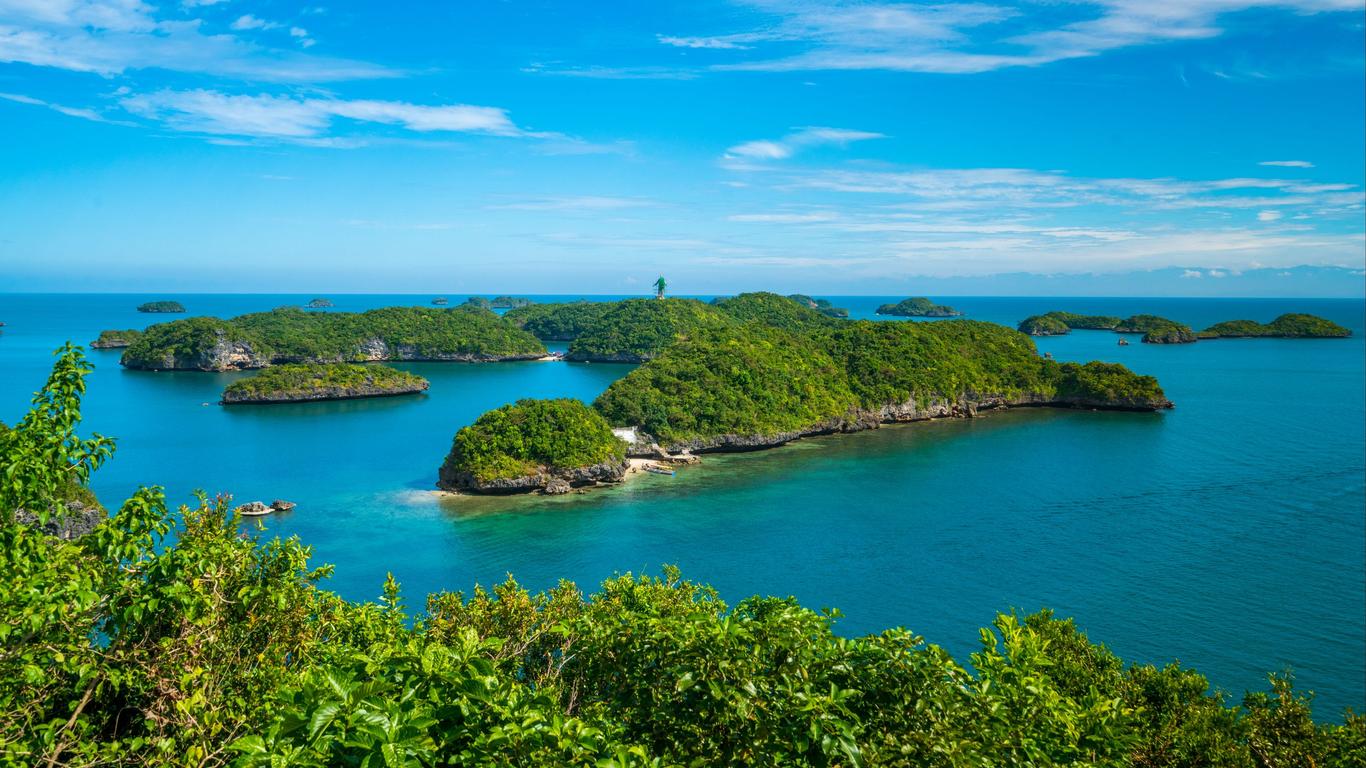Scattered across the Lingayen Gulf near the city of Alaminos, the Hundred Islands National Park is a protected region in the Philippines’ Pangasinan province. It contains just over 120 islands and islets, most of which are uninhabited, and boasts idyllic beaches and magnificent coral reefs to explore.
The distinctly-shaped islands appear like mushrooms sprouting from the water, with the erosive action of the ocean undercutting their bases. The interior forests are home to palm civets, crab-eating macaques, geckos, monitor lizards and reticulated pythons, while the surrounding waters support populations of Fraser’s dolphins, dugongs, olive ridley and green sea turtles. Three of the islands in the archipelago have been developed for tourism, including Governor Island, Quezon Island and Children’s Island, while the largest island, Cabaluyan, to the north of the national park is considered its “mother island”. Governor’s Island is the only one with a guest house which features an impressive viewing deck with panoramic views across the island. Quezon Island has an established campsite where visitors can spend the night, as well as a popular snorkelling area where giant clams, colourful corals and a myriad of fish inhabit the shallow waters. Children’s Island also features calm, shallow waters which are ideal for swimming, as well as cottages and picnic huts.
Hundred Islands National Park is accessed from Lucap Wharf which lies around three hours’ drive from Manila. Visitors can either opt to visit as part of an organised tour which will access a selection of islands or charter a boat to explore more extensively at their leisure.
Hundred Islands National Park was designated in 1940 by President Quezon with its own conservation and development authority. In 1982 it became a Marine Reserve and Tourist Zone, managed by the Philippines Tourism Authority before this responsibility was transferred to the Alaminos City Government in 2005.





